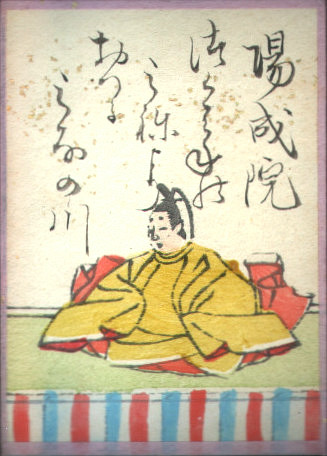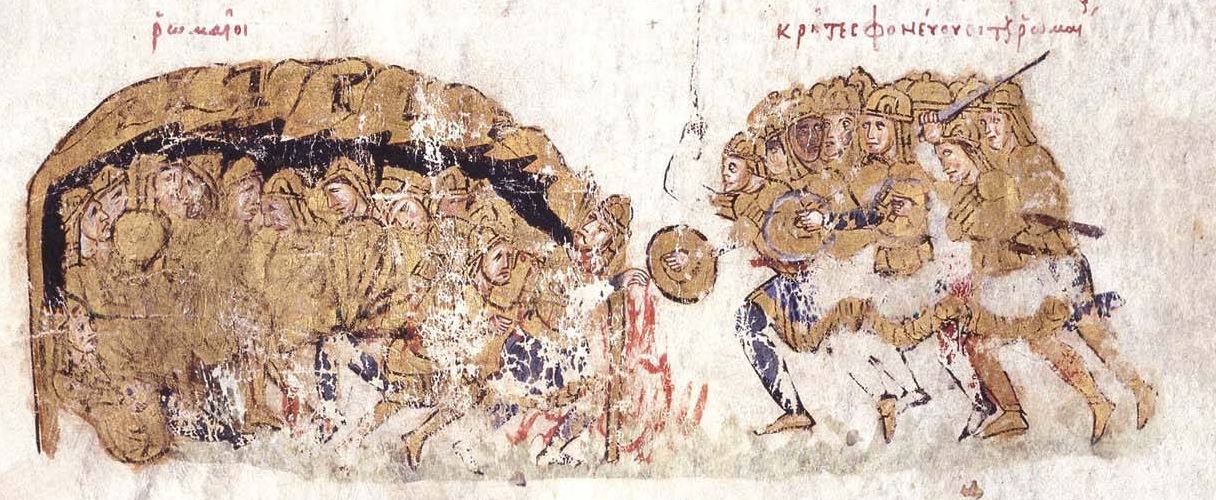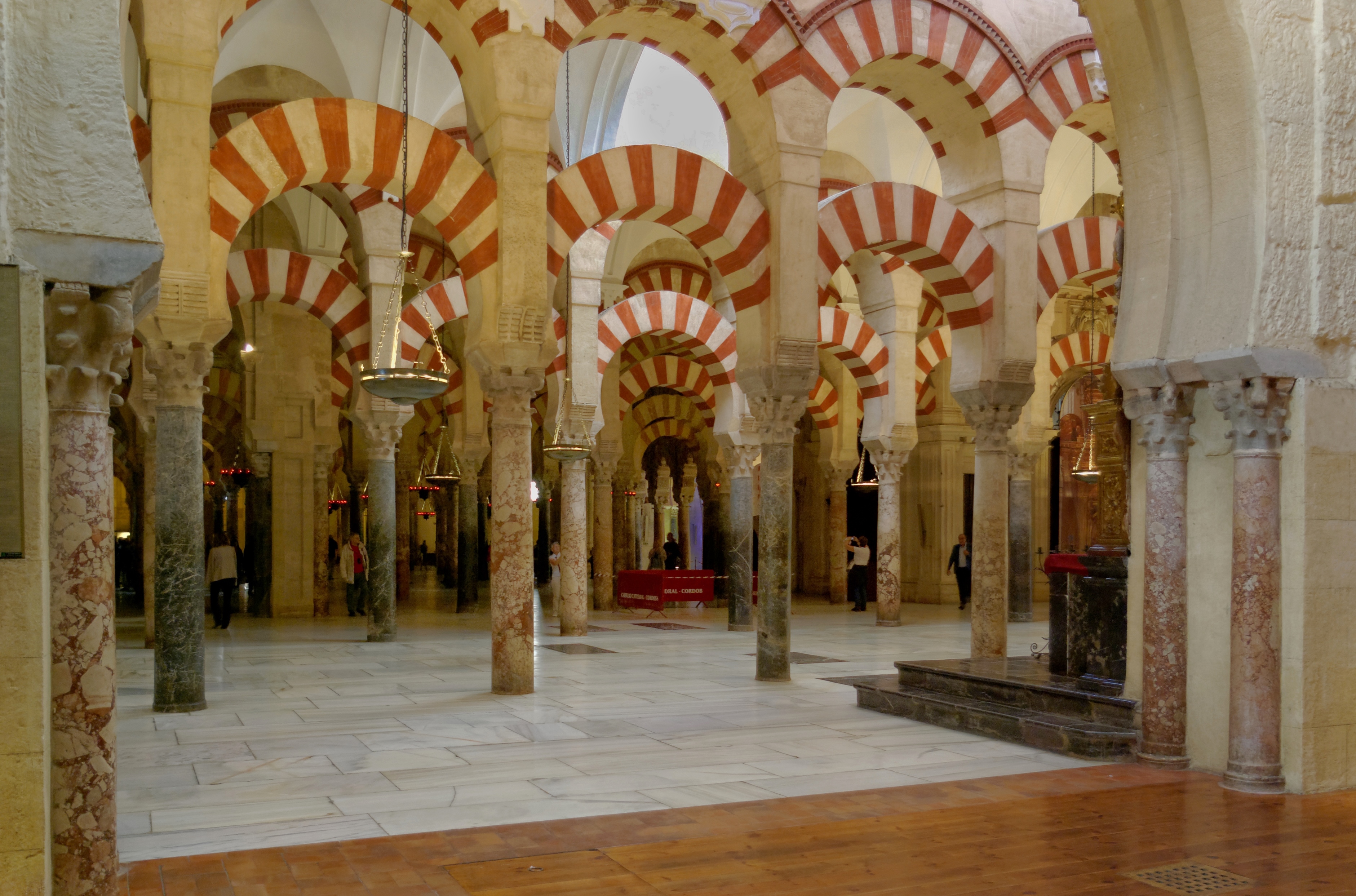|
949
Year 949 ( CMXLIX) was a common year starting on Monday of the Julian calendar. Events By place Byzantine Empire * Arab-Byzantine War: Hamdanid forces under Sayf al-Dawla raid into the theme of Lykandos, but are defeated. The Byzantines counter-attack and seize Germanikeia, defeating an army from Tarsus, and raiding as far south as Antioch. General (''strategos'') Theophilos Kourkouas captures Theodosiopolis (modern-day Erzurum) after a 7-month siege. Europe * A Byzantine expeditionary force under Constantine Gongyles attempts to re-conquer the Emirate of Crete from the Saracens. The expedition ends in a disastrous failure; the Byzantine camp is destroyed in a surprise attack. Gongyles himself barely escapes on his flagship. *Abd al-Rahman III the ''Caliph'' of Córdoba declares Jihad, preparing a large army & conquers the city of Lugo in the extreme North of Iberia. This raid shows to be one of the furthest raids Muslims in Spain ever conducted, done as a show ... [...More Info...] [...Related Items...] OR: [Wikipedia] [Google] [Baidu] |
Miroslav Of Croatia
Miroslav () was the King of Croatia from 945 until his death in 949 and a member of the Trpimirović dynasty. Reign He was the oldest son of Krešimir I and succeeded him as king in 945. During his reign, Croatia suffered a civil war and the Croatian navy was reduced to only 30 ships, while the infantry and cavalry also had losses. Miroslav was finally killed by Pribina, Ban of Croatia in 949, and his younger brother, Michael Krešimir II, succeeded him as king. See also * List of rulers of Croatia This is a complete list of dukes and kings of Croatia () under domestic ethnic and elected dynasties during the Duchy of Croatia (until 925), the Kingdom of Croatia (925–1102), the Kingdom of Croatia and Dalmatia (1102–1526 in union with K ... References Sources * * 10th-century Croatian monarchs Year of birth unknown 949 deaths Trpimirović dynasty {{Croatia-bio-stub ... [...More Info...] [...Related Items...] OR: [Wikipedia] [Google] [Baidu] |
Theme (Byzantine District)
The themes or (, , singular: , ) were the main military and administrative divisions of the middle Byzantine Empire. They were established in the mid-7th century in the aftermath of the Slavic migrations to Southeastern Europe and Muslim conquests of parts of Byzantine territory, and replaced the earlier provincial system established by Diocletian and Constantine the Great. In their origin, the first themes were created from the areas of encampment of the field armies of the East Roman army, and their names corresponded to the military units that had existed in those areas. The theme system reached its apogee in the 9th and 10th centuries, as older themes were split up and the conquest of territory resulted in the creation of new ones. The original theme system underwent significant changes in the 11th and 12th centuries, but the term remained in use as a provincial and financial circumscription until the very end of the Empire. History Background During the late 6th and ear ... [...More Info...] [...Related Items...] OR: [Wikipedia] [Google] [Baidu] |
Emirate Of Crete
The Emirate of Crete ( or , ; ) was an Arab Islamic state that existed on the Mediterranean island of Crete from the late 820s to Siege of Chandax, the reconquest of the island by the Byzantine Empire in 961. Although the emirate recognized the suzerainty of the Abbasid Caliphate and maintained close ties with Tulunid Egypt, it was ''de facto'' independent. A group of Arab al-Andalus, Andalusian exiles led by Abu Hafs Umar al-Iqritishi conquered Crete in either 824 or 827/828, and established an independent Islamic state. The Byzantines launched a campaign that took most of the island back in 842-43 under Theoktistos, but the reconquest was not completed and would soon be reversed. Later attempts by the Byzantine Empire to recover the island failed, and for the approximately 135 years of its existence, the emirate was one of the major foes of Byzantium. Crete commanded the sea lanes of the Eastern Mediterranean and functioned as a forward base and haven for Muslim corsair fleets ... [...More Info...] [...Related Items...] OR: [Wikipedia] [Google] [Baidu] |
Córdoba, Spain
Córdoba ( ; ), or sometimes Cordova ( ), is a city in Andalusia, Spain, and the capital of the Province of Córdoba (Spain), province of Córdoba. It is the third most populated Municipalities in Spain, municipality in Andalusia. The city primarily lies on the right bank of the Guadalquivir in the south of the Iberian Peninsula. Once a Colonia (Roman), Roman colonia, it was taken over by the Visigothic Kingdom followed by the Muslim conquest of the Iberian Peninsula, Muslim conquest in the eighth century. Córdoba became the capital of the Umayyad state of Córdoba, Emirate and then Caliphate of Córdoba, from which the Umayyad dynasty ruled all of al-Andalus until 1031. Under Umayyad rule, Córdoba was transformed into a centre of education and learning, and by the 10th century it had grown to be the second-largest city in Europe. The caliphate experienced a manifold political crisis in the early 11th century that brought about state collapse. Following the Siege of Córdoba ( ... [...More Info...] [...Related Items...] OR: [Wikipedia] [Google] [Baidu] |
Spain
Spain, or the Kingdom of Spain, is a country in Southern Europe, Southern and Western Europe with territories in North Africa. Featuring the Punta de Tarifa, southernmost point of continental Europe, it is the largest country in Southern Europe and the fourth-most populous European Union member state. Spanning across the majority of the Iberian Peninsula, its territory also includes the Canary Islands, in the Eastern Atlantic Ocean, the Balearic Islands, in the Western Mediterranean Sea, and the Autonomous communities of Spain#Autonomous cities, autonomous cities of Ceuta and Melilla, in mainland Africa. Peninsular Spain is bordered to the north by France, Andorra, and the Bay of Biscay; to the east and south by the Mediterranean Sea and Gibraltar; and to the west by Portugal and the Atlantic Ocean. Spain's capital and List of largest cities in Spain, largest city is Madrid, and other major List of metropolitan areas in Spain, urban areas include Barcelona, Valencia, Seville, ... [...More Info...] [...Related Items...] OR: [Wikipedia] [Google] [Baidu] |
Pribina, Ban Of Croatia
Pribina was a Croatian nobleman and politician who is the first historically attested Ban of Croatia, having served under kings Miroslav and Michael Krešimir II of Croatia. Pribina is known to have killed king Miroslav during a civil war in the kingdom and replaced him with Michael Krešimir II because the former had restrained his jurisdiction over some areas. He ruled over counties (županija) Gacka, Krbava and Lika, according to ''De Administrando Imperio''. He is also referred to in a charter as ''potens banus'', meaning "powerful ban". According to historian Tibor Živković, implying different chronological order of Croatian dukes and kings, Pribina should be identified with the same-named Duke of Lower Pannonia, Pribina, while Frankish archon Kotzil with Duke's son Kocel, both mentioned in ''De Administrando Imperio (; ) is a Greek-language work written by the 10th-century Byzantine Emperor Constantine VII. It is a domestic and foreign policy manual for the use ... [...More Info...] [...Related Items...] OR: [Wikipedia] [Google] [Baidu] |
Constantine Gongyles
Constantine Gongyles (; ) was a Byzantine eunuch and court official who led a failed expedition against the Emirate of Crete in 949. Biography file:Saracens of Crete defeat the Byzantine army.png, 300px, The Cretan Saracens defeat the Byzantines. Miniature (illuminated manuscript), Miniature from the ''Madrid Skylitzes'' Nothing is known of Constantine's early life, except that he came from Paphlagonia.. The ''Life of St. Basil the Younger'' hagiography indicates that he and his brother Anastasios were relatives of the eunuch Constantine Barbaros, who rose to power at court as a favourite of the powerful ''parakoimomenos'' Samonas and of Emperor Leo VI the Wise (r. 886–912). Constantine first rose to prominence in 913/4, when following the death of Emperor Alexander of Byzantium, Alexander (r. 912–913), the Empress-regent Zoe Karbonopsina selected him and his brother as her personal councillors. On this occasion, Constantine was raised to the supreme noble rank of ''patrikio ... [...More Info...] [...Related Items...] OR: [Wikipedia] [Google] [Baidu] |
Sayf Al-Dawla
ʿAlī ibn ʾAbū'l-Hayjāʾ ʿAbdallāh ibn Ḥamdān ibn Ḥamdūn ibn al-Ḥārith al-Taghlibī (, 22 June 916 – 8 February 967), more commonly known simply by his honorific of Sayf al-Dawla (, ), was the founder of the Emirate of Aleppo, encompassing most of northern Syria and parts of the western Jazira. The most prominent member of the Hamdanid dynasty, Sayf al-Dawla originally served under his elder brother, Nasir al-Dawla, in the latter's attempts to establish his control over the weak Abbasid government in Baghdad during the early 940s CE. After the failure of these endeavours, the ambitious Sayf al-Dawla turned towards Syria, where he confronted the ambitions of the Ikhshidids of Lower Egypt to control the province. After two wars with them, his authority over northern Syria, centred at Aleppo, and the western Jazira, centred at Mayyafariqin, was recognized by the Ikhshidids and the Abbasid caliph. A series of tribal rebellions plagued Sayf al-Dawla's realm unti ... [...More Info...] [...Related Items...] OR: [Wikipedia] [Google] [Baidu] |
Siege
A siege () . is a military blockade of a city, or fortress, with the intent of conquering by attrition, or by well-prepared assault. Siege warfare (also called siegecrafts or poliorcetics) is a form of constant, low-intensity conflict characterized by one party holding a strong, static, defensive position. Consequently, an opportunity for negotiation between combatants is common, as proximity and fluctuating advantage can encourage diplomacy. A siege occurs when an attacker encounters a city or fortress that cannot be easily taken by a quick assault, and which refuses to surrender. Sieges involve surrounding the target to block provision of supplies and reinforcement or escape of troops (a tactic known as "investment"). This is typically coupled with attempts to reduce the fortifications by means of siege engines, artillery bombardment, mining (also known as sapping), or the use of deception or treachery to bypass defenses. Failing a military outcome, sieges can often be ... [...More Info...] [...Related Items...] OR: [Wikipedia] [Google] [Baidu] |
Caliphate
A caliphate ( ) is an institution or public office under the leadership of an Islamic steward with Khalifa, the title of caliph (; , ), a person considered a political–religious successor to the Islamic prophet Muhammad and a leader of the entire Muslim world (''ummah''). Historically, the caliphates were polities based on Islam which developed into multi-ethnic trans-national empires. During the medieval period, three major caliphates succeeded each other: the Rashidun Caliphate (632–661), the Umayyad Caliphate (661–750), and the Abbasid Caliphate (750–1517). In the fourth major caliphate, the Ottoman Caliphate, the rulers of the Ottoman Empire claimed caliphal authority from 1517 until the Ottoman caliphate was Abolition of the Caliphate, formally abolished as part of the Atatürk's reforms, 1924 secularisation of Turkey. An attempt to preserve the title was tried, with the Sharifian Caliphate, but this caliphate fell quickly after its conquest by the Sultanate o ... [...More Info...] [...Related Items...] OR: [Wikipedia] [Google] [Baidu] |
Abd Al-Rahman III
ʿAbd al-Raḥmān ibn Muḥammad ibn ʿAbd Allāh ibn Muḥammad ibn ʿAbd al-Raḥmān ibn al-Ḥakam al-Rabdī ibn Hishām ibn ʿAbd al-Raḥmān al-Dākhil (; 890–961), or simply ʿAbd al-Raḥmān III, was the Umayyad Emir of Córdoba from 912 to 929, at which point he founded the Caliphate of Córdoba, serving as its first caliph until his death. Abd al-Rahman won the ''laqab'' (sobriquet) () in his early 20s when he supported the Maghrawa Berbers in North Africa against Fatimid expansion and later claimed the title of Caliph for himself. His half-century reign was known for its religious tolerance. Life Early years Lineage and appearance Abd al-Rahman was born in Córdoba, on 18 December 890. His year of birth is also given as 889 and 891. He was the grandson of Abdullah ibn Muhammad al-Umawi, seventh independent Umayyad emir of al-Andalus. His parents were Abdullah's son Muhammad and Muzna (or Muzayna), a Christian concubine. His paternal grandmother was also a ... [...More Info...] [...Related Items...] OR: [Wikipedia] [Google] [Baidu] |






